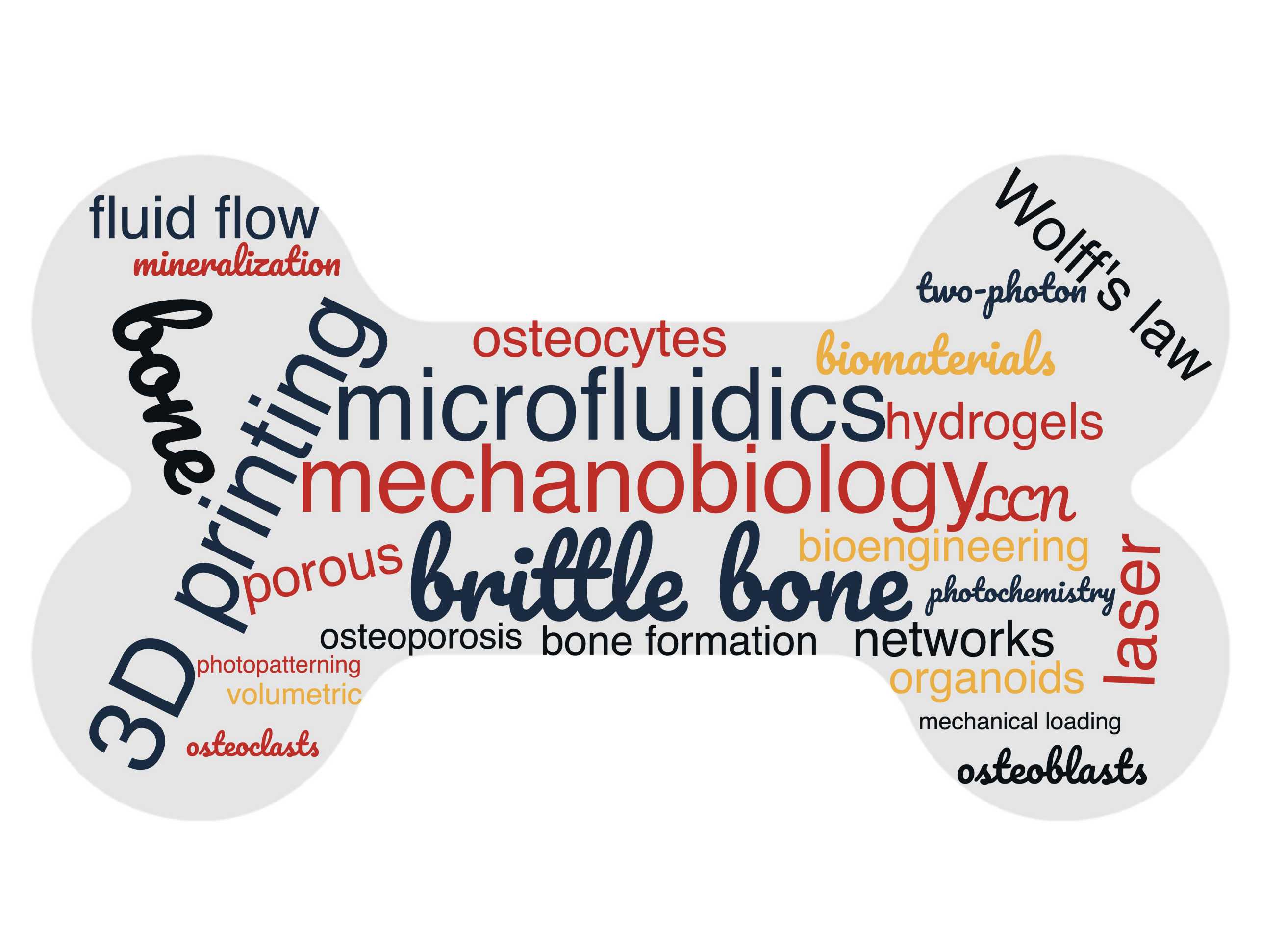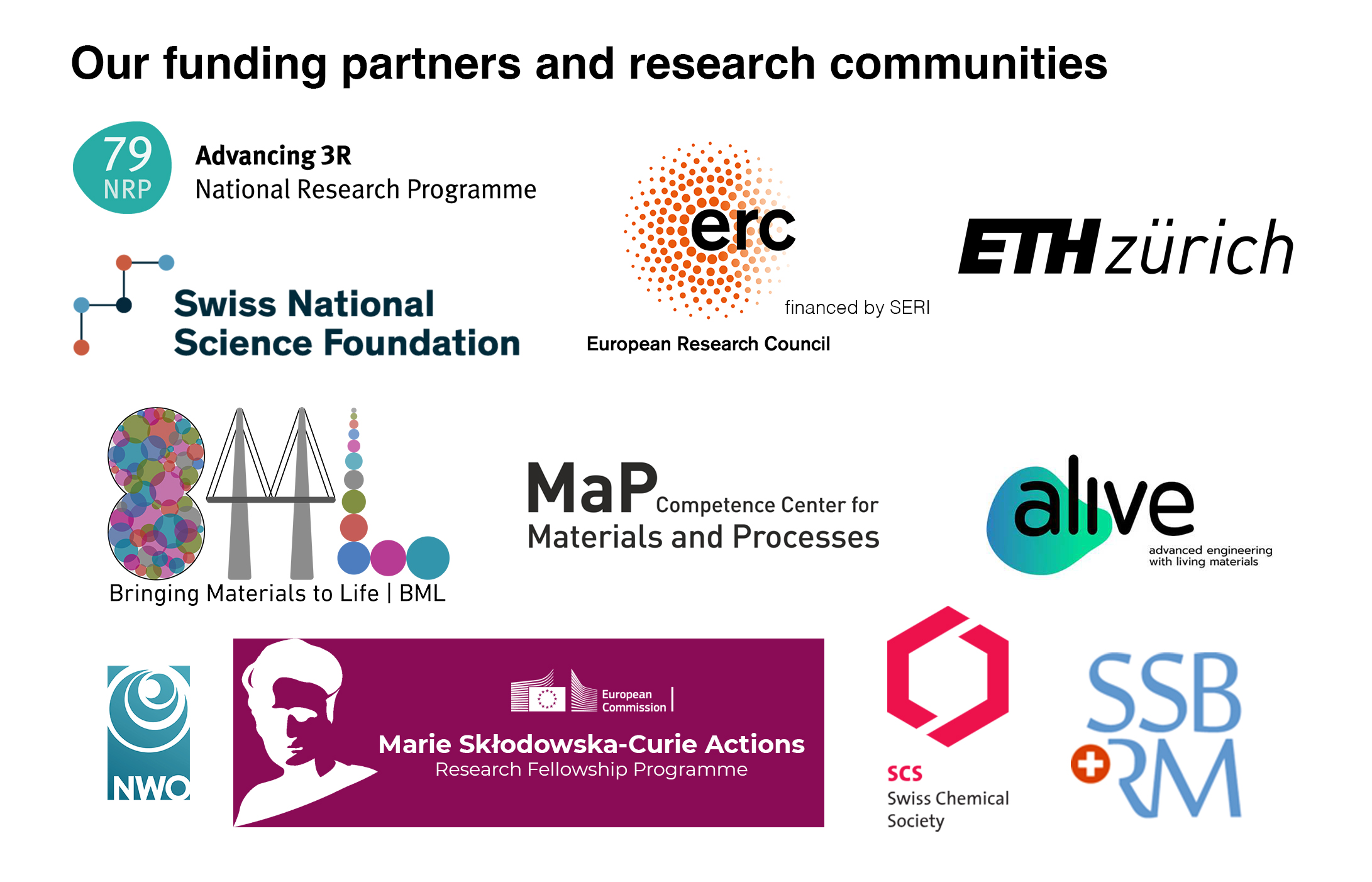About Us

The Biomaterials Engineering (BME) group led by Professor Xiao-Hua Qin belongs to the Institute for Biomechanics (IfB) of the Department Health Sciences and Technology (D-HEST) at ETH Zurich. BME is a member of the MaP | Competence Center for Materials and Processes, ALIVE | Advanced Engineering with Living Materials initiative as well as the BML | Bringing Materials to Life consortium of ETH Zurich. We are extremely grateful for the finance support from SERI-funded ERC Starting Grant, ETH Zurich, Swiss National Science Foundation, the National Research Programme 79 'Advancing 3R', and other agencies.
Bone is a fascinating living material designed by nature. It is lightweight, yet mechanically strong and adaptive. According to Wolff’s law, bone adapts its internal architecture in response to mechanical loads. However, the human skeleton degenerates due to aging or genetic defects. Thus, developing novel tools and 3D organoid models that recapitulate human bone development and pathology in vitro offers the means to understand skeletal biology at the next level, to discover new biomarkers affecting bone remodeling and to screen potential therapeutic approaches to treat human diseases such as age-related bone loss (osteoporosis) and brittle bone disease (osteogenesis imperfecta).
Our goal is to interface biomaterials and advanced manufacturing techniques for in vitro disease modeling in the spirit of 3Rs principle. We leverage interdisciplinary advances in materials engineering and mechanobiology to build dynamic 3D bone organoid models of native-like functionality. We design, synthesize and engineer biomaterials with tailored mechanical and chemical properties. By using high-resolution bioprinting such as two-photon patterning and organ-on-chip techniques, we seek to reconstruct the microarchitecture and function of human bone tissues in the laboratory. We then apply these miniaturized bone models for both fundamental and translational biomedical research.
